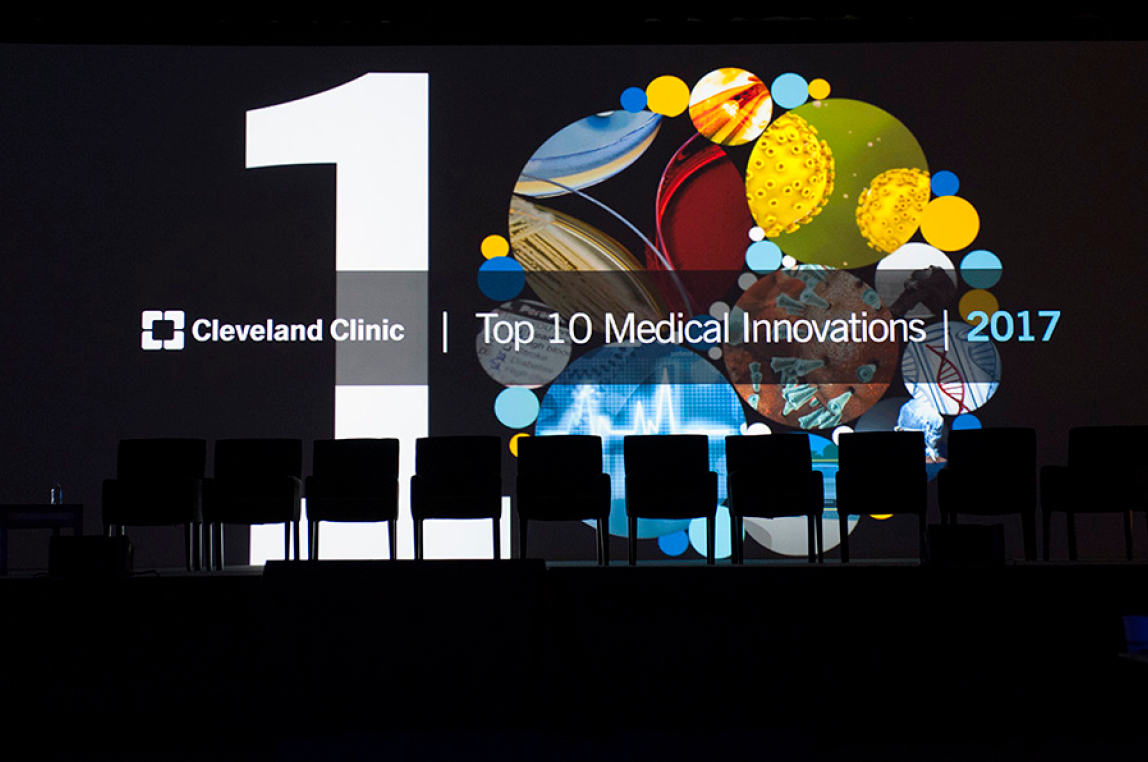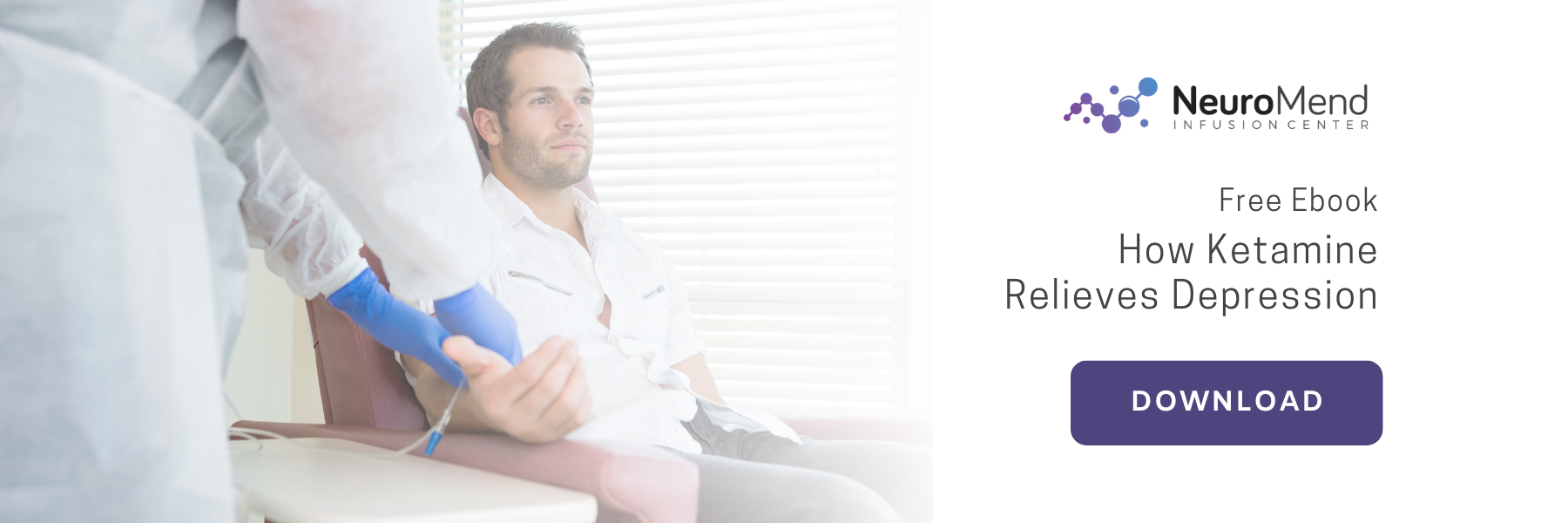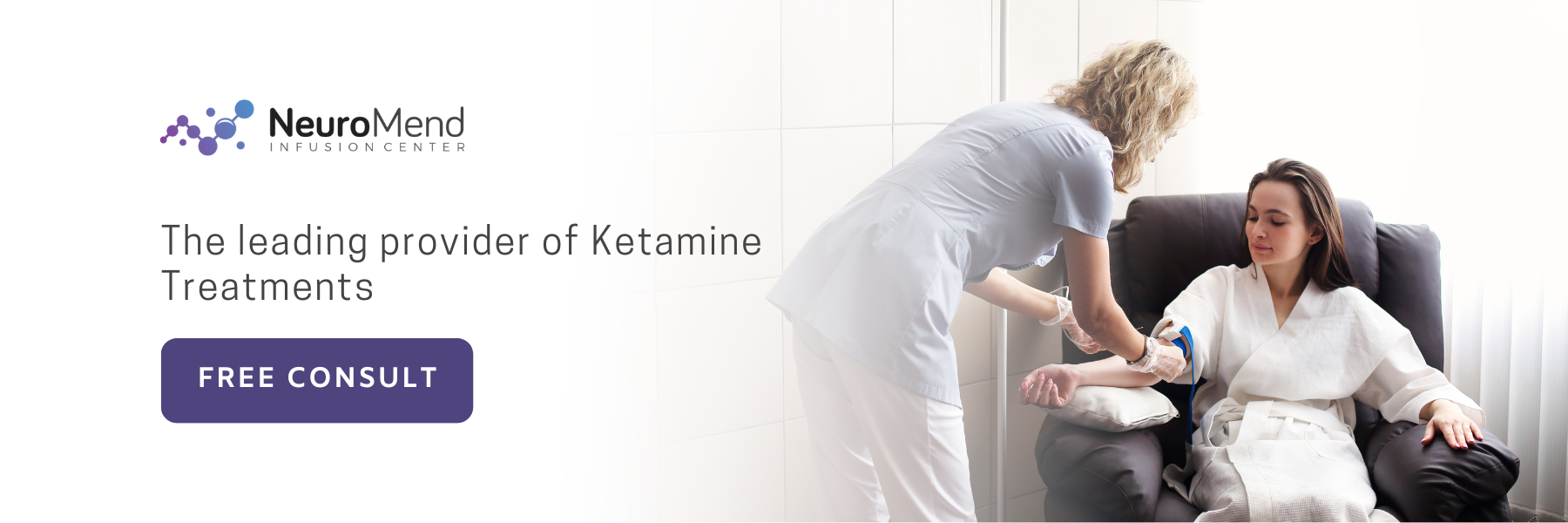Cleveland Clinic’s Medical Innovation Summit concluded on Oct. 26 with the annual list of emerging medical technologies that could transform healthcare in the coming year. Ketamine for Treatment-Resistant Depression listed as number 7!

Here are the Top 10 Medical Innovations, in order of anticipated importance:
1. Using the Microbiome to Prevent, Diagnose and Treat Disease
Trillions of bacteria called microbes, collectively known as the microbiome, make up communities in the human body. What scientists have learned about them plays a role in preventing, diagnosing and treating disease, including the discovery that chemicals they emit influence how diseases progress and the way the body digests food and uses medicine. The microbiome is the healthcare industry’s most promising frontier for developing ways to prevent, detect and correct microbe imbalances.
2. Diabetes Drugs that Reduce Cardiovascular Disease and Death
An increased risk of cardiovascular disease is a major complication of diabetes. In 2016, two new medications were found to lower mortality rates by reducing cardiovascular events in patients with type 2 diabetes. The drug Empaglifozin modifies progression of heart disease by working with the kidney, while the drug liraglutide has a comprehensive effect on many organs. These medications’ success may lead to a complete shift in which medications are prescribed for diabetes patients, as well as a new wave of research into other ways of targeting type 2 diabetes and the illnesses that occur along with it.
3. Cellular Immunotherapy to Treat Leukemia and Lymphomas
Chimeric antigen receptor (CAR) T-cell therapies involve removing a patient’s immune system T-cells, genetically reprogramming them to seek and destroy tumor cells, and then returning them to the patient after chemotherapy. These CAR T-cells then behave the way that immune system cells should, seeking out antigens, multiplying, and attacking and killing the foreign cancer cells. The new cells often remain in the body to minimize chances of relapse. Results of this approach have been impressive, with some studies focusing on acute lymphoblastic leukemia showing a remission rate of 90 percent.
4. Liquid Biopsies to Find Circulating Tumor DNA
Blood tests known as “liquid biopsies” will help oncologists uncover signs of actual DNA, or cell-free circulating tumor DNA (ctDNA ) , shed from a tumor into the bloodstream. The advantage is that ctDNA is more than 100 times more abundant in the blood than tumor cells. While still in trial phases, this revolutionary cancer test is being hailed as a flagship technology of the federal government’s Cancer Moonshot Initiative.
5. Automated Car Safety Features and Driverless Capabilities
Innovators in Detroit and Silicon Valley are working to reduce the number of car crashes and even prevent them altogether. They’ve created automatic safety features and engineering technology ranging from collision warning systems, to 360-degree cameras and drowsiness alerts, to adaptive cruise control, lane-keep assistance and electronic stability control. In addition, some of the nation’s biggest companies are making huge investments in driverless cars. While safety and legal questions remain, the goal is to make the roads safer for everyone.
6. Fast Healthcare Interoperability Resources
Interoperability allows different information technology systems and software applications to communicate and exchange data, regardless of the application or application vendor. This is important to the healthcare industry, which must consider privacy, security and accuracy when using information that may be shared by clinicians, labs, hospitals, pharmacies and patients.
Fast Healthcare Interoperability Resources (FHIR) is a soon-to-be-released tool that functions as an interpreter between two healthcare systems or offices that have developed their own languages, allowing health information systems to work together across organizational boundaries in order to advance the effective delivery of healthcare.
7. Ketamine for Treatment-resistant Depression
Drugs and therapies have been developed to help balance or trigger serotonin, norepinephrine and other neurotransmitters for patients diagnosed with depression. But the medications don’t work well for one-third of patients. In 2013, ketamine, a drug commonly used for anesthesia, was studied for its ability to target and inhibit the action of N-methyl-D-aspartate (NMDA) receptors of nerve cells. The results were overwhelmingly favorable. Initial studies indicated that 70 percent of treatment-resistant depression patients injected with a low dose of ketamine saw their symptoms improve within 24 hours.
8. 3-D Visualization and Augmented Reality for Surgery
Surgeons typically operate with their heads down, which can lead to muscle strain, especially during lengthy procedures. In addition, this position limits their peripheral vision and communication with staff. But this past year, two of the most intricate surgical practices, ophthalmology and neurology, began experimenting with technology that allows surgeons to keep their heads up while immersed in high-resolution, 3D visual representations of their subject. These stereoscopic systems also use data to generate visual templates for surgeons to execute certain tasks within an operation. Experts and surgeons who have piloted the technology say that the added comfort and visual information help surgeons to operate more efficiently and effectively.
9. Self-administered HPV Test
Nearly 80 percent of sexually active women contract the human papilloma virus (HPV), of which certain strains are responsible for 99 percent of cervical cancer cases. Despite great strides in the prevention and treatment of HPV, many women around the world have no access to HPV tests and vaccines. To address this problem, scientists have developed a self-administered HPV test kit that includes a test tube, a swab and a mail-in box. The idea is that women can administer their own test, mail a sample back to a lab and be alerted to dangerous strains of HPV.
10. Bioabsorbable Stents
Every year, 600,000 patients receive metal stents to treat coronary artery blockage. Risks associated with stents include complications resulting from the inhibition of natural vessel motion as well as future blood clots. Recently, the first bioabsorbable stent to treat coronary artery blockage was approved in the United States. The stent, made of a naturally dissolving polymer, widens the clogged artery for two years before being absorbed into the body in a manner similar to dissolvable sutures. The disappearing stent leaves nothing behind, eliminating risk of inflammation that can lead to late-stent thrombosis and restenosis.












